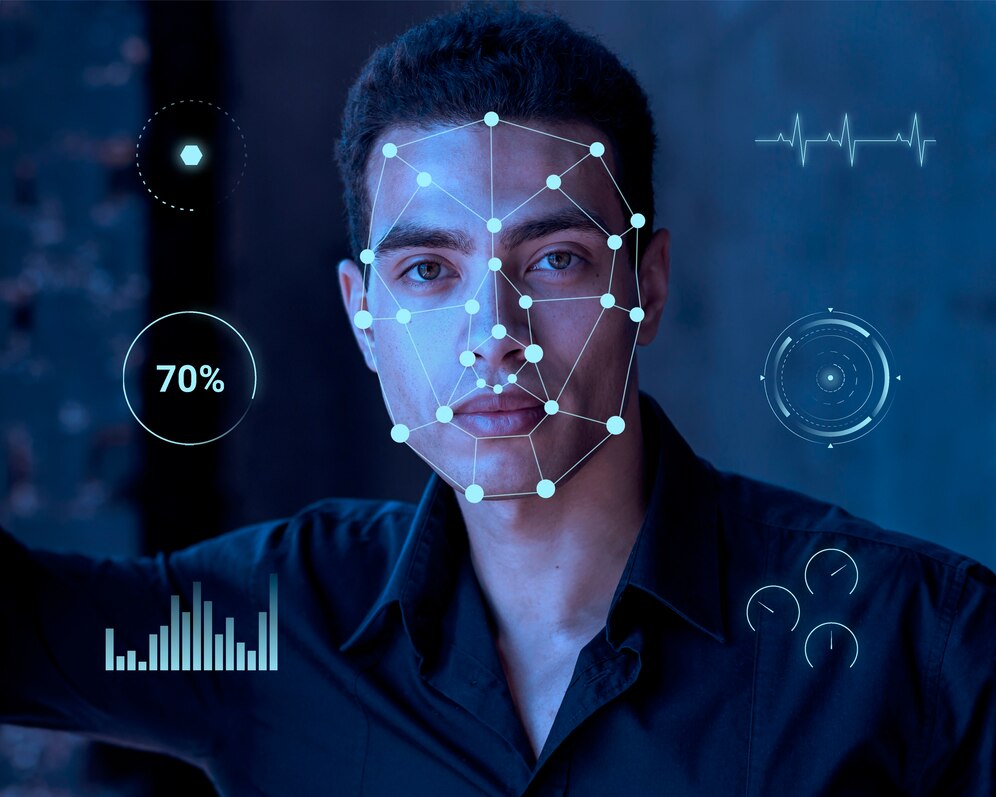In the age of digital security and streamlined processes, visa and passport photos have transcended their humble beginnings as simple identity records. Today, they stand as the first impression and crucial gateway to global mobility. And increasingly, a silent partner takes center stage in ensuring their accuracy and efficiency: artificial intelligence. From automated background checks and facial feature verification to subtle enhancements that meet stringent government regulations, AI is subtly revolutionizing the way we present ourselves to the world. This article delves into the fascinating interplay between AI and visa/passport photos, exploring how this invisible hand improves accuracy, security, and user experience, ultimately paving the way for a smoother and more secure journey across borders.
Background Information
The production of passport and visa photos has long been a critical component of international travel and border control systems. These photographs serve as a fundamental means of identification and are integral to ensuring the security and integrity of cross-border movements. However, the traditional methods employed in capturing, processing, and verifying these photos have faced persistent challenges, prompting a reevaluation of the approach to travel document photography.
Historically, the passport and visa photo process involved manual capture, printing, and verification steps. While this method has been functional, it is beset with various shortcomings that have become more pronounced in an era where technological advancements have reshaped numerous facets of our lives. Issues related to compliance with diverse and evolving international standards, manual errors in the photo capture and processing stages, and inconsistencies in photo quality have prompted the exploration of alternative approaches.
In recent years, the rise of artificial intelligence (AI) technologies has presented a promising avenue for addressing the limitations associated with traditional passport and visa photography. The ability of AI to analyze and process visual data with precision, coupled with its capacity to learn and adapt, makes it a suitable candidate for revolutionizing the domain of travel document photography.
The recognition of the challenges posed by traditional methods, combined with the potential offered by AI, has spurred efforts to integrate these technologies into the passport and visa issuance processes. Governments, border control agencies, and private entities are increasingly exploring the incorporation of AI algorithms and tools to enhance the efficiency, accuracy, and user experience associated with travel document photography.
As the demand for seamless international travel continues to grow, the role of AI in this context is poised to become increasingly significant. The subsequent sections of this paper will delve into the specific challenges encountered in traditional passport and visa photography, the ways in which AI is being implemented to address these challenges, and the tangible benefits that arise from this technological integration. Additionally, real-world case studies will be examined to provide concrete examples of successful AI implementations in the realm of travel document photography.
Challenges Associated with Traditional Passport and Visa Photography:
The traditional methods employed in passport and visa photography are fraught with a myriad of challenges that have persisted over time. These challenges contribute to inefficiencies, inaccuracies, and user dissatisfaction in the overall travel document issuance process.
One of the primary challenges is the issue of compliance. Different countries impose specific and evolving standards for passport and visa photos, encompassing criteria such as head positioning, facial expression, and background color. Traditional methods often struggle to consistently meet these requirements, leading to rejections and delays in the application process.
Manual errors represent another significant challenge. Human involvement in the capture and processing of photos introduces the possibility of inaccuracies, ranging from misalignment of facial features to errors in data entry during verification. These errors can compromise the reliability of the identification process, potentially leading to security concerns.
Inconsistent photo quality poses yet another challenge. Variations in lighting conditions, background settings, and facial expressions during the photo capture process can result in suboptimal image quality. Such inconsistencies not only hinder accurate facial recognition but also contribute to an overall lack of standardization in travel document photographs.
| Challenges | Description | AI Solutions and Benefits |
| Compliance issues | Difficulty in consistently meeting specific and evolving international standards. | AI-driven guidance and verification tools ensuring adherence to standards. |
| Manual errors | Potential inaccuracies introduced by human involvement in photo capture and processing. | Automation of photo capture and verification processes to minimize human errors. |
| Inconsistent photo quality | Variations in lighting, background, and facial expressions leading to suboptimal image quality. | AI-based image editing for real-time adjustments, ensuring consistent photo quality. |
Implementation of Artificial Intelligence in the Processing of Passport and Visa Photos
Facial Recognition Technology:
- Facial Feature Analysis: Facial recognition technology leverages advanced algorithms to analyze and identify specific facial features. AI systems can accurately detect key elements such as the eyes, nose, and mouth, ensuring a comprehensive understanding of an individual’s unique facial structure.
- Compliance Verification: AI-driven systems provide real-time feedback during the photo capture process. By analyzing the captured image, these systems can guide users to ensure compliance with international standards and regulations. For example, the system can alert users if the photo lacks the required head positioning, facial expression, or background color, thereby minimizing the likelihood of application rejection due to non-compliance.
- Enhanced Accuracy in Identification: The use of facial recognition technology significantly enhances the accuracy of identification. AI algorithms can compare the captured facial features with stored templates, reducing the chances of misidentification. This not only improves the security of travel documents but also streamlines the verification process at border control points.
Automated Photo Editing:
- Real-time Adjustments: AI-based image editing tools are employed to make real-time adjustments to the captured photos. These adjustments include correcting lighting conditions, removing shadows, and ensuring a consistent background. By standardizing these elements, AI ensures that each passport or visa photo meets the desired quality standards, regardless of the conditions in which the photo was taken.
- Consistent Photo Quality: The automation of photo editing processes contributes to consistent photo quality across all images. By eliminating variations in lighting and background, AI ensures that each photo adheres to a standardized set of visual criteria. This not only enhances the overall aesthetics of the photos but also facilitates more reliable facial recognition during the verification process.
Real-time Feedback:
- User Guidance: AI-powered systems provide users with real-time feedback during the photo capture process. Through interactive guidance, users can adjust their positioning or facial expression to meet compliance standards. This real-time assistance minimizes the likelihood of users submitting non-compliant photos, reducing the need for re-submissions and streamlining the overall application process.
- Minimization of Manual Errors: The integration of AI in providing real-time feedback contributes to the reduction of manual errors. Users are guided through the photo capture process, minimizing the risk of misalignments or inaccuracies. This not only enhances the accuracy of the photos but also reduces the burden on manual verification processes.
The implementation of AI in passport and visa photography not only addresses the challenges associated with traditional methods but also introduces a more sophisticated and user-friendly approach to the entire process. The next section will delve into the numerous benefits that arise from the incorporation of artificial intelligence in travel document photography.
Benefits of Artificial Intelligence in Improving Visa and Passport Photos
The integration of artificial intelligence (AI) in the realm of passport and visa photography offers a multitude of benefits, ranging from increased accuracy to enhanced user experience. The following outlines the key advantages of utilizing AI in the improvement of travel document photos:
- Increased Accuracy: The foremost benefit of AI implementation is the significant improvement in accuracy, especially in facial recognition. AI algorithms can precisely analyze and compare facial features, reducing the chances of misidentification. This heightened accuracy enhances the security of travel documents, making them more reliable for border control and identity verification.
- Efficiency and Speed: Automated processes powered by AI contribute to a substantial increase in the efficiency and speed of passport and visa photo capture, processing, and verification. AI systems can swiftly analyze and edit photos, minimizing the time required for manual intervention. This acceleration is particularly crucial in handling large volumes of applications, reducing processing times and improving overall workflow efficiency.
- Enhanced User Experience: AI-driven systems provide users with real-time feedback and guidance during the photo capture process. This interactive assistance ensures that users capture compliant photos on the first attempt, reducing the likelihood of rejections and resubmissions. The result is a more streamlined and user-friendly experience for individuals applying for travel documents.
- Consistent Photo Quality: AI-based image editing tools contribute to consistent photo quality by standardizing elements such as lighting, shadows, and background. This consistency ensures that all passport and visa photos meet the desired visual criteria, regardless of the conditions in which they were captured. Consistent photo quality not only enhances the aesthetics of travel documents but also facilitates more reliable facial recognition during the verification process.
In summary, the benefits derived from the incorporation of AI in passport and visa photography extend beyond mere technological advancement. These advantages encompass heightened security, streamlined processes, and improved user satisfaction, collectively contributing to a more efficient and reliable system for the issuance and verification of travel documents. The subsequent section will delve into real-world case studies and implementations to illustrate the practical application and success of AI in this domain.

